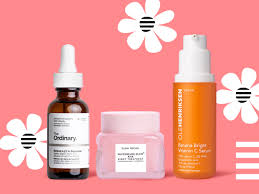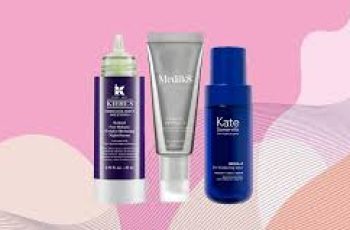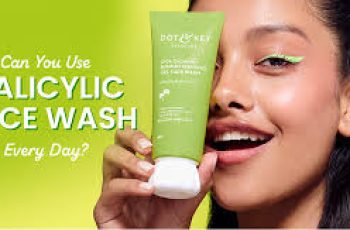
Can You Use Retinol With AHA? A Complete Guide to Combining These Powerful Skincare Ingredients
If you’re just starting out in skincare or considering stepping up your routine, you’ve likely come across two buzzworthy ingredients: retinol and AHAs (alpha hydroxy acids).
Both promise clearer, smoother, and healthier-looking skin. But the big question remains—can you use retinol with AHA safely and effectively?
Today, we’ll unpack this common query and help you build the perfect routine.
What Exactly Are Retinol and AHAs?
Before diving into combining these skincare stars, let’s clarify what each does and why they’re so popular.
Retinol is a derivative of vitamin A and is widely regarded as a gold standard for anti-aging and skin renewal.
It accelerates cell turnover, promotes collagen production, and helps reduce wrinkles, fine lines, and hyperpigmentation. Retinol penetrates deep into the skin’s layers, stimulating new skin cell growth.
AHAs, or alpha hydroxy acids, are naturally derived acids, commonly found in fruits and milk. Popular AHAs include glycolic acid and lactic acid.
These ingredients act as chemical exfoliants, gently dissolving dead skin cells on the surface. This exfoliation brightens the complexion, smooths texture, and helps unclog pores.
For a deeper understanding, check out our detailed posts on retinol and AHAs.
What Comes First: AHA or Retinol?
The answer depends largely on the product formulation and consistency. A fundamental rule in skincare is to apply products from thinnest to thickest texture.
This ensures actives penetrate the skin effectively without being blocked by heavier layers.
AHAs often come in cleansers, toners, or light serums. These are generally applied earlier in your routine. Retinol, meanwhile, is usually found in serums, oils, or moisturizers applied toward the end of your routine.
So, in most cases, you apply your AHA first, allow it to absorb, then follow with retinol.
Are AHA and Retinol the Same?
No! This is a common misconception. Retinol does not exfoliate the skin like AHAs. Instead, it speeds up your skin’s natural cell renewal process, making new skin cells rise faster to the surface.
AHAs physically exfoliate dead skin cells and impurities from the skin’s surface. Retinol works deeper, targeting lower skin layers to encourage cell turnover and collagen production.
Both are powerful but act differently and complement each other well—when used correctly.
Can You Use Retinol and Glycolic Acid Together?
Yes and no. Using both together in the same routine can be risky due to irritation potential. However, you can use glycolic acid during the day and retinol in the evening.
Retinol is sensitive to UV light and degrades when exposed to sunlight. Applying it at night maximizes its effectiveness.
Glycolic acid, on the other hand, can be used safely in the morning, preferably followed by sunscreen.
This separation minimizes irritation while still allowing your skin to benefit from both ingredients.
How to Patch Test New Skincare Products
Before layering active ingredients like retinol or AHAs, always perform a patch test.
Apply a small pea-sized amount on your inner forearm. Leave it overnight and check for redness, itching, or irritation the next day.
If no reaction occurs, your skin is likely ready for facial application. Patch testing helps prevent unpleasant surprises and skin sensitivity.
Using AHA and Retinol Together: What You Need to Know
Yes, you can use AHA and retinol in your skincare routine, but you must proceed with caution.
Both ingredients affect your skin’s barrier and pH balance, which if disrupted, can lead to redness, dryness, or irritation.
Here’s a key tip: Allow at least 30 minutes between applying AHA and retinol products. This waiting time helps your skin’s pH level stabilize and reduces the risk of adverse reactions.
If you have sensitive or temperamental skin, consider using AHAs in the morning and retinol at night on alternate days. This helps your skin adjust and prevents over-exfoliation or barrier damage.
Why You Should Avoid Using AHA and Retinol Simultaneously
Using these two ingredients at the same time can strip your skin’s natural oils, leaving it dry, tight, and prone to irritation.
When your skin barrier is compromised, it becomes vulnerable to free radicals like pollution, UV rays, and harsh weather.
This can result in increased sensitivity and even damage over time. If you notice persistent redness or discomfort, stop combining these ingredients and consult a dermatologist.
Does Retinol Go On Before or After Serum?
It depends on your product formulation. Retinol is often found in serums, oils, or moisturizers. Generally, serums have a thin consistency and go on before moisturizers.
If you use multiple serums, apply lighter ones first, followed by thicker, richer products. If your retinol is in a serum form, apply it after cleansing and toning but before heavier creams or oils.
When Is the Best Time to Apply Retinol?
Retinol is best applied in your evening skincare routine. Nighttime application protects it from sunlight, which can break down its effectiveness.
Apply retinol on clean, dry skin after cleansing and toning. Follow it with a moisturizer to reduce potential dryness or irritation.
Since retinol can cause dryness, pairing it with a hydrating serum containing hyaluronic acid helps.
Hyaluronic acid pulls moisture into the skin, keeping it plump and healthy while counteracting retinol’s drying effects.
How to Build a Skincare Routine with Retinol and AHA
Here’s a simple example:
Morning Routine:, Cleanser, AHA toner or serum, Hydrating serum (optional), Moisturizer, Broad-spectrum sunscreen
Evening Routine:
Cleanser, Hydrating toner (optional), Retinol serum or moisturizer, Hydrating serum (hyaluronic acid), Moisturizer
Always listen to your skin. Start slowly with each active ingredient and increase usage frequency as your skin builds tolerance.
Final Thoughts
Combining retinol and AHA can transform your skin when done thoughtfully. They complement each other by addressing different skin concerns, from exfoliation to deep renewal.
However, timing, product formulation, and skin sensitivity are critical to success.
Remember, never rush adding powerful actives to your routine. Patch test first, introduce one product at a time, and watch for any signs of irritation.
When in doubt, consult with a skincare professional or dermatologist.
If you want to stay updated on skincare tips, tricks, and product recommendations, feel free to join the conversation over on Procoal’s Instagram. Looking forward to seeing you there!


